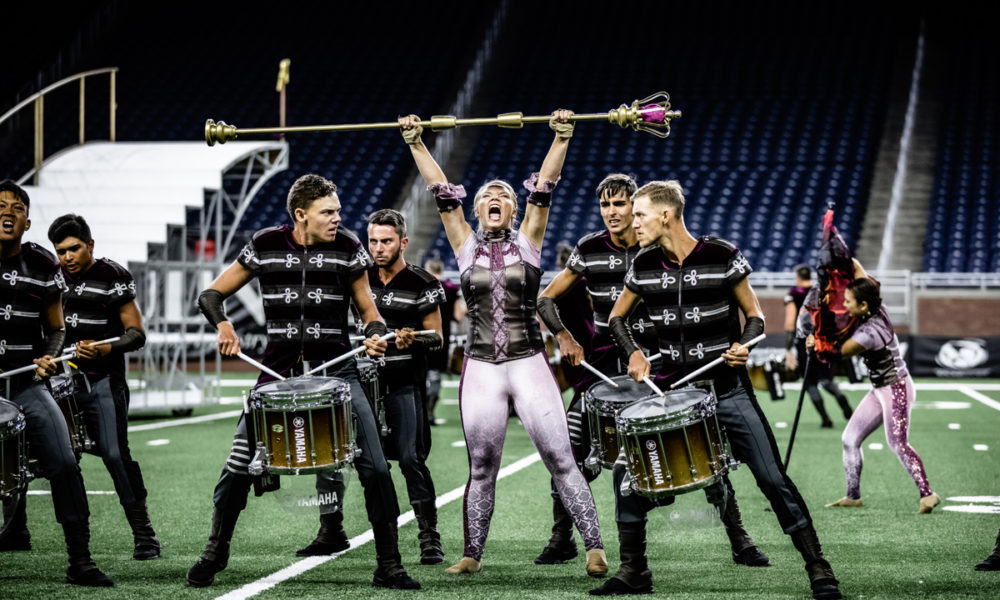The Cadets and its parent organization Youth Education in the Arts! have emerged from a year of change ready to celebrate its 85th anniversary and future successes.
 It’s been a year of growth for The Cadets Drum and Bugle Corps as well as its parent organization Youth Education in the Arts! (YEA!)
It’s been a year of growth for The Cadets Drum and Bugle Corps as well as its parent organization Youth Education in the Arts! (YEA!)
Following the sexual allegations against previous Chief Executive Officer and Director George Hopkins in April 2018, Youth Education in the Arts! replaced its entire board of directors and created new policies.
Vicki Ferrence Ray, YEA! executive director since October 2018, and Scott Litzenberg, The Cadets’ director since May 2018, reflects on how the organization continues to march forth as the corps reaches its milestone 85th anniversary.
Halftime: What are your musical and career backgrounds?
Ferrence Ray: I marched in the 1992 Cadets and a year in the Penn State Blue Band. … I was the chief national programs officer for Hugh O’Brian Youth Leadership.
Litzenberg: I marched with the Cadets in 1982 and ’83. … I taught 34 years as a high school band director in Pennsylvania, and I was … director of the Crossmen in the ’80s as well as 2006. [I] spent 20 years working on the Drum Corps International [DCI] event staff and being the head tabulator.
 Halftime: How have YEA! and The Cadets moved on following the April 2018 allegations of sexual abuse against then-CEO/director George Hopkins?
Halftime: How have YEA! and The Cadets moved on following the April 2018 allegations of sexual abuse against then-CEO/director George Hopkins?
Ferrence Ray: One of the first things we did was try to figure out what there was in terms of policies and procedures and start from there. … Everything you see on [the YEA! Resources page, yea.org/resources,] has been developed over the last year. The two really big [policies] we tried to tackle fairly quickly … were the “Youth Safety Policy” and “Medical and Corps Care Policy.”
The second big thing … is the organization has had very high standards in terms of what I call the front of the house, things that can be seen, but the back-of-the-house operations has not had that standard. … For example, no one in the organization had formal job descriptions or position descriptions. We have that now. There was no documented organizational structure for the organization. We have that now. There was no employee manual. There is now. That’s definitely played into a cultural shift. We want a culture of excellence, not just in the front but also in the back. We want to hold ourselves to the highest ethical standards, and we want transparency in what we do.
Litzenberg: From a drum corps standpoint, the biggest thing we need to do is take care of these kids, so getting policies in place in so many different areas to make sure we’re being consistent in how we treat them, how we tour, … our expectations of how we expect them [and staff] to behave, … and still putting a world-class program on the field and doing our job. All of that is adding up to changing some of the mindset and culture of an organization that has such a great history, and we know we can still do things right.
In our show this year is a song called “Be Better,” and we think we can do that with a lot of things. … We can always do better at the things we are doing as an organization.
Halftime: What are some big challenges still facing the corps and YEA!?
Ferrence Ray: Continuing down the path of financial sustainability for the long term, … making sure the budget is balanced, and we’re actually putting in more than we’re spending because we’ve got a debt load. … We need to work on eliminating the debt over a series of time. … [Also] we want to be able to retain people long term and continue to produce excellent programs knowing that there’s always room for improvement.
Litzenberg: The biggest challenge is trying to maintain a program at a world-class level while we’re also dealing with trying to fix a lot of things that had happened in the past and dealing with some restraints we have because of some of the bad choices that have been made in the past.
Halftime: What are your proudest moments during this transition period?
Ferrence Ray: I’m really proud [of] the YEA! board members who have stepped up and leaned in since a year ago in April because there are some really amazing people who helped get this organization back on track, … the staff here in the organization who have stuck with it when they didn’t have to, … [and] all of the people who have come to help over the last year.
Litzenberg: The proudest moments for me were when we performed toward the end of the season last year here in Allentown. … Seeing the reaction of the corps at the end of the season and also dealing with trying to continue this legacy and tradition has been very humbling.
Halftime: What is the show about this year, and what unique aspects can we expect?
Litzenberg: The whole show is a journey about … empowering people, so that they know they do have control over what their destiny is. We have a queen that comes out with the power and then is stripped of that power, and people fight over it. Most of the time, when people fight over the power like that, no one ends up with the power. Then it’s a matter of rebuilding and celebrating people coming together and existing in some kind of harmony.
Ferrence Ray: This year is the 85th anniversary of The Cadets and also the 50th anniversary of women in the corps. I think this year’s show celebrates that anniversary of 50 years of women in the corps very nicely. … To me, [the show is] about the struggle for power and equality and acceptance amongst the genders and amongst people in general. … The first women in the corps in 1969 really had to earn a place. … Now if you’re a woman in The Cadets, there isn’t a question about your gender limiting you. … The year I marched in 1992 was the first year there was a female drum major. That was a very big deal that year. The last several years, The Cadets have had female drum majors and don’t bat an eyelash at it now.
Halftime: How will you celebrate the corps’ 85th anniversary?
Litzenberg: We tried to incorporate the history of The Cadets, especially from a uniform standpoint, with a modern twist. We think our uniform, our look, and the history … is something that people would like to see and means something to our alumni and fans and The Cadets.
Ferrence Ray: Oct. 12 and 13 is going to be a big Cadets homecoming weekend celebration in northern New Jersey with multiple events.
Halftime Magazine: What are your goals for the future?
Litzenberg: For The Cadets, one of the biggest goals is to maintain and continue the legacy that’s been established over the corps’ 85 years, … putting the kids first, so they have that type of experience and … something that they’ll always remember.
Ferrence Ray: First is a vision for the future and world-class operations top to bottom, front to back. … Second [is to] always keep in mind that … this activity of the marching arts and pageantry arts is [about] positive youth development and really staying focused on that outcome. … The third is building the organization to be strong into the future.
Web Extras
For more questions and answers with Vicki Ferrence Ray and Scott Litzenberg, visit the Web Exclusives, Web Extras section.


